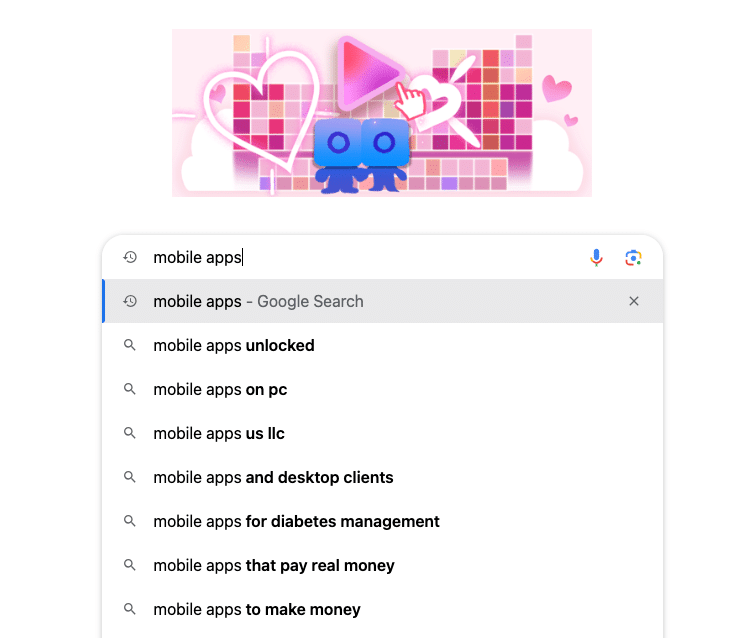The internet is full of information. We can find almost anything we need to know with just a few keystrokes and clicks. While that’s highly beneficial to us as consumers, it makes it difficult for businesses to stand out in a crowded market.
How do you ensure that your content stands out with countless websites vying for attention? You write high-quality, informative, and engaging material that satisfies your target audience’s specific needs and interests. Long-tail keywords are fundamental for using user search intent to elevate your content above the noise.
By understanding the uses of long-tail keywords and their impact on search engine optimization (SEO), you can target a specific audience in an increasingly crowded online landscape. Let’s look at how long-tail keywords can improve your content value and position in search engine results.
Understanding the difference between Long-Tail and Short-Tail Keywords
Short-tail keywords, also known as head or generic keywords, are short, generic phrases that are highly competitive and broad in scope. For example, “digital marketing” or “SEO services” fall into this category. Terms that are highly popular and frequently used by searchers generate a massive amount of search results and make it more difficult for your content to stand out.
Long-tail keywords are longer, more specific keyword phrases that are less competitive and have a narrower focus. Long-tail terms typically contain three or more words and target a particular niche or audience. For instance, “affordable SEO services for small businesses” or “best content marketing strategies for startups” are long-tail keywords. While they may have a lower search volume, they have a higher conversion rate as they attract searchers closer to making a purchase or seeking a specific solution.
How to Use Long-Tail Keywords in Your Content
Incorporating long-tail keywords into your content strategy taps into the specifics of what your target audience is searching for. Addressing their precise needs creates highly relevant, engaging content that resonates with your audience. Valuable content enhances the user experience and boosts your search engine rankings, as search algorithms favor content that caters to specific queries.
Here are a few tips on how to incorporate longer phrases into your content:
Research, Research, Research: Use keyword research tools to identify long-tail keywords relevant to your industry or niche. Look for keywords with reasonable search volume and low competition.
Understand User Intent: Put yourself in the shoes of your target audience. What specific problems are they trying to solve? What questions are they asking? Tailor your content to address these pain points and provide valuable solutions.
Natural Integration: Long-tail keywords shouldn’t feel forced or out of place. Seamlessly integrate them into your content, ensuring it flows naturally and reads well.
Create Standout Headlines: Craft compelling headlines that include long-tail keywords. Headlines capture the attention of both search engines and users and increase the chances of engagement and click-throughs.
The rise of voice search has also enhanced the importance of long-tail keywords. The way we search is changing as more and more users rely on voice assistants like Siri, Google Assistant, or Amazon Alexa to find information. Voice queries tend to be longer, more conversational, and reflect natural language patterns. By incorporating long-tail keywords into your content, you can better align with these voice search queries and increase your chances of appearing in voice search results.
Where to Use Long-Tail Keywords
Long-tail keywords can be effectively used in various digital marketing contexts, including:
Website Content
Incorporate longer search phrases into website copy, including landing pages, to help enhance SEO and attract more targeted traffic.
Blog Articles
Strategically integrate long-tail keywords into blog post titles, headings, and body content to improve search engine visibility and cater to specific user intents.
Meta Descriptions
Crafting meta descriptions that include long-tail keywords can attract qualified clicks from search engine results pages (SERPs) and improve overall click-through rates.
Product Listings
E-commerce platforms can benefit from using long-tail keywords in product titles, descriptions, and tags to capture niche customer segments and improve product visibility.
Social Media Posts
Leveraging long-tail keywords in social media captions and posts can help target specific audience segments and improve content discoverability across platforms.
PPC Advertising
Incorporating long-tail keywords into ad copy, headlines, and display URLs within pay-per-click (PPC) campaigns can increase ad relevance and drive higher-quality traffic.
Email Marketing
Utilizing long-tail keywords in subject lines, email content, and calls-to-action can enhance email open rates, engagement, and overall campaign performance.
YouTube Video Descriptions
Including long-tail keywords in video titles, descriptions, and tags can optimize content for search visibility and attract relevant viewers on the platform.
Local SEO
Long-tail keywords can be effective in local SEO strategies, especially for businesses targeting specific geographic locations or niche markets within their locality.
Voice Search Optimization
Given the conversational nature of long-tail keywords, they are well-suited for voice search optimization, enabling brands to capture voice-based search queries effectively.
How to Find Long-Tail Keywords in Your Niche
To find long-tail keywords tailored to your niche, consider the following approaches:
Google Suggest: Begin typing a relevant keyword into the Google search bar, and you’ll receive suggested search queries based on popular user searches. Suggestions often reveal longer search terms worth exploring.

Competitor Analysis: Analyze the websites and content of your competitors to identify the long-tail keywords they are targeting. Take note of valuable insights and opportunities for differentiation.
Keyword Research Tools: Leverage keyword research tools like SEMRush, Ahrefs, or Moz to discover keywords related to your industry or product.
For example, your research may find the following examples beneficial for your industry:
- “Best family-friendly resorts in Florida”
- “How to start a successful blog for beginners.”
- “Top-rated gluten-free recipes for baking enthusiasts”
- “Affordable summer fashion trends for budget-conscious shoppers”
- “Effective home remedies for migraine relief”
- “What are long-tail keywords?”
- “Social media secrets for beginners”
Each of these long-tail keyword examples caters to a specific audience, addresses a unique need, and increases the chances of attracting highly motivated visitors to your site.
At Vervocity, we know the ins and outs of leveraging long-tail keywords to achieve remarkable results. Our team of experts can help you optimize your website, create compelling content, and dominate search engine rankings.
Are you interested in boosting your search engine rankings with our copywriting and search engine optimization services? Call us at (217) 222-1451 or fill out our contact form to learn more about how we can help!











